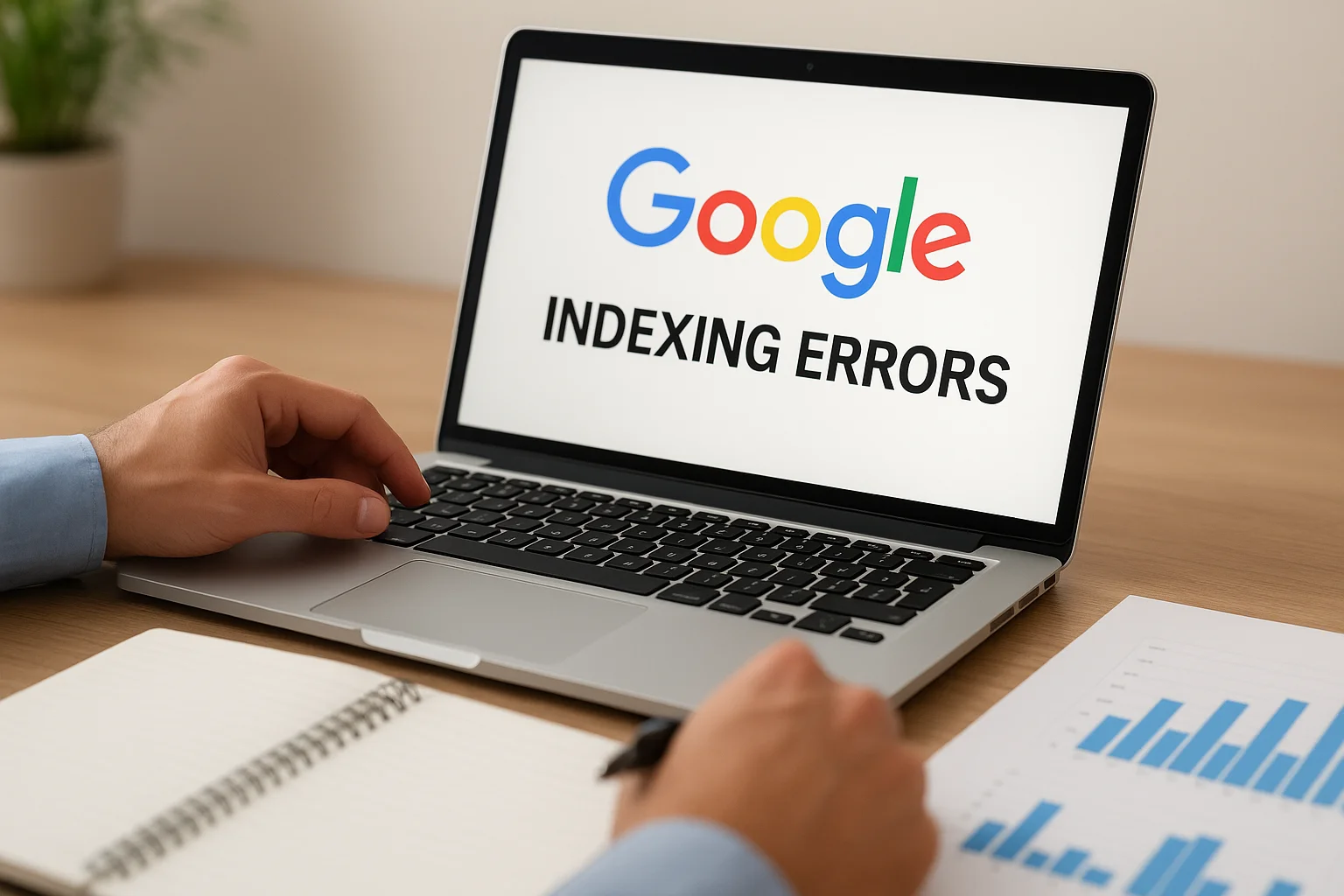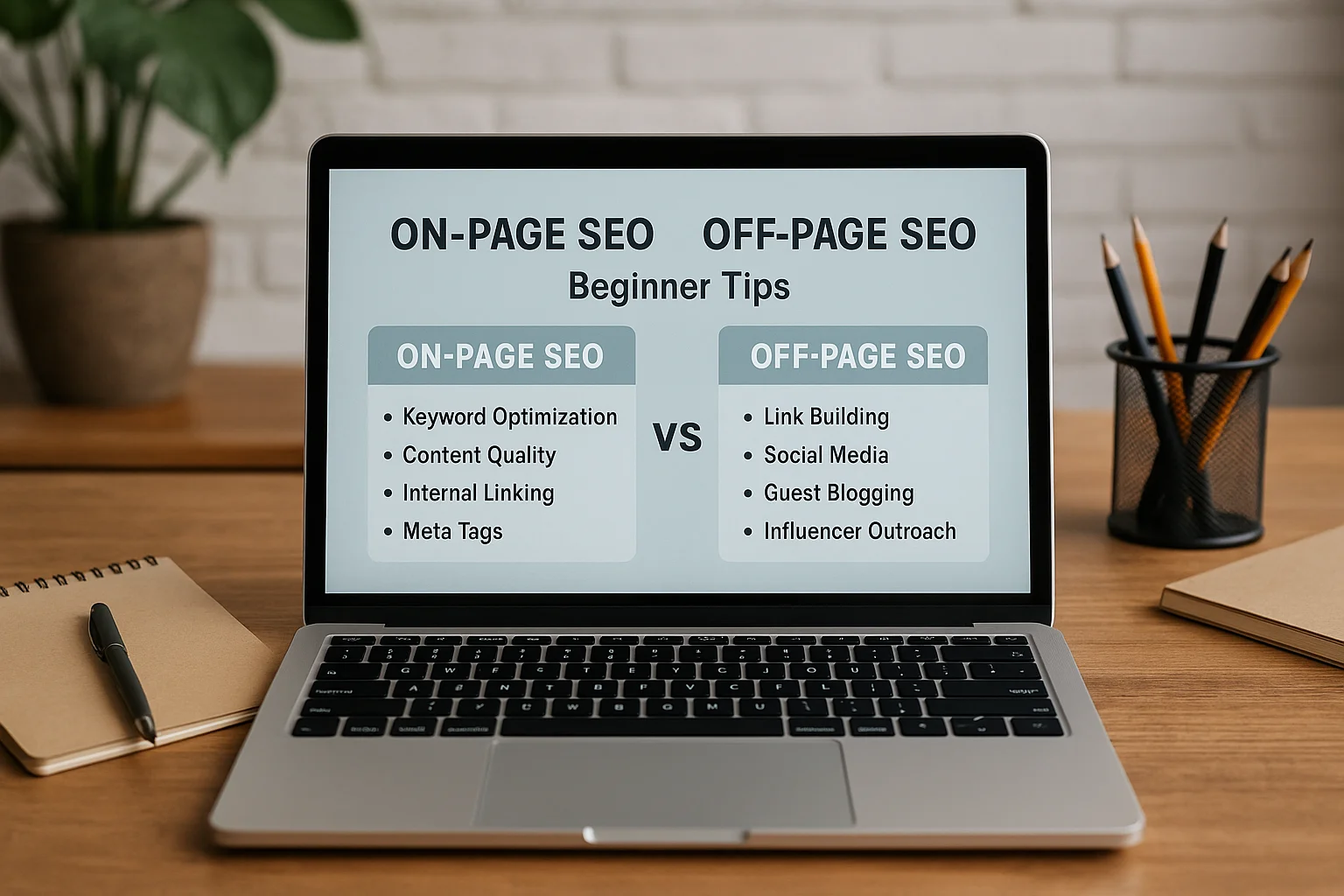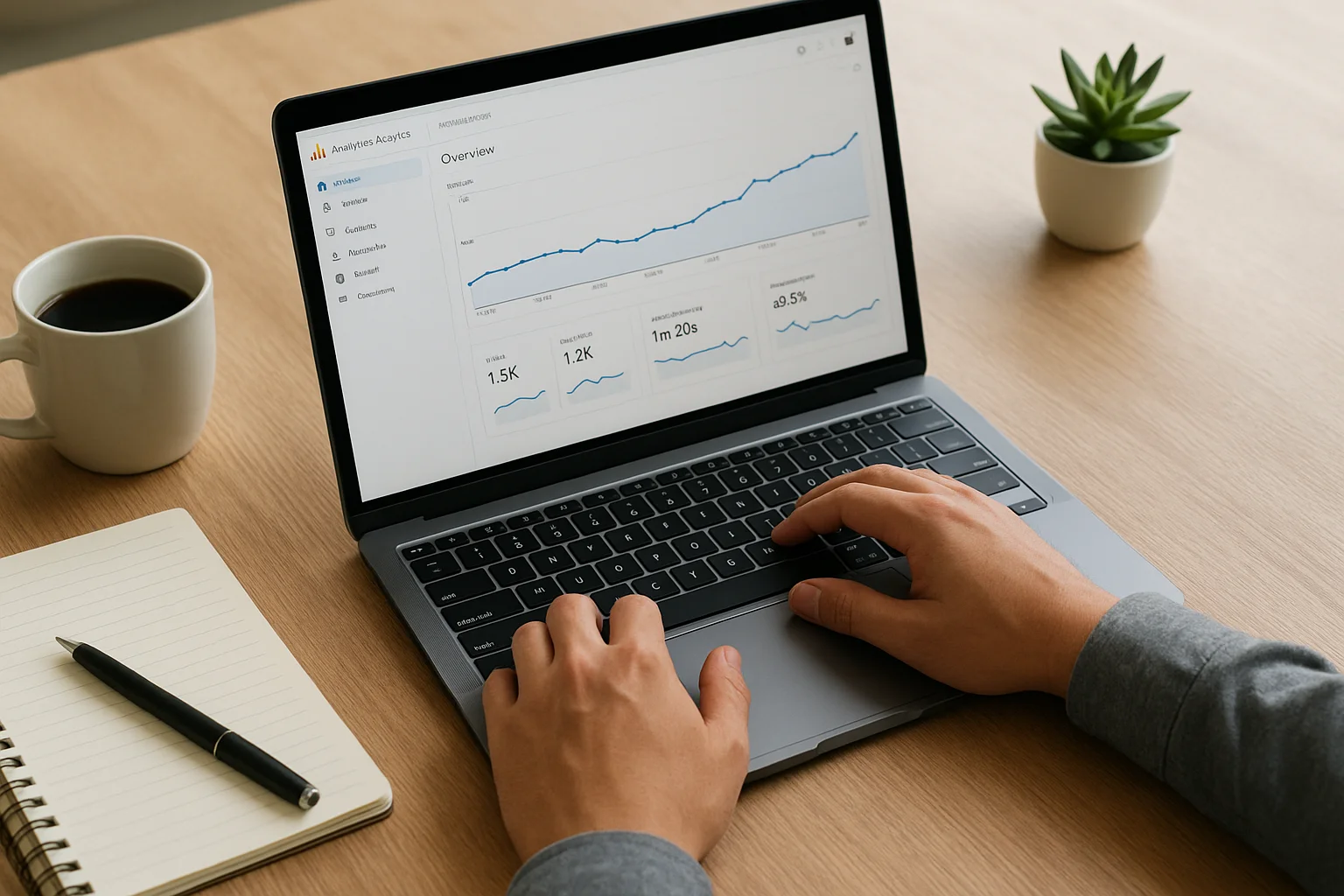Quick Fixes for Google Indexing Errors

Understanding Google Indexing Errors
Google indexing errors occur when search engines are unable to properly crawl, understand, or include your web pages in their search results. These errors can significantly affect your site’s visibility and organic traffic if left unresolved. Understanding the nature of these errors is the first step toward fixing them effectively.
There are several common types of indexing issues. For example, a page might be marked as “Crawled – Currently Not Indexed”, meaning Google has seen the page but decided not to include it in the index yet. Another frequent issue is “Discovered – Currently Not Indexed”, which indicates that Google is aware of the page but has not yet processed it for indexing. Duplicate content is another common problem, often resulting in pages labeled “Duplicate without user-selected canonical”, which can confuse search engines about which page should rank.
Indexing errors can arise from multiple sources, including technical, content-related, or accessibility issues. Pages blocked by robots.txt, meta tags with noindex, or improper HTTP headers can fail to appear in search results. Additionally, pages with slow loading times, poor mobile usability, or unresolved soft 404 errors may also be excluded from the index.
Monitoring your site with tools like Google Search Console is essential to identify which pages are affected and to understand the specific error type. By analyzing indexing reports, you can pinpoint whether the issue is related to crawling, content quality, duplication, or technical settings, enabling you to apply targeted fixes more efficiently.
Ultimately, recognizing and understanding these errors helps you prioritize actions that can improve your site’s visibility and ensure that all valuable content is discoverable by search engines.
Why Quick Fixes Matter for SEO
Quick fixes for indexing errors are essential because search engines prioritize sites that are accessible, crawlable, and free of technical issues. When pages remain unindexed or encounter errors, your site may lose valuable visibility, and competitors can capture traffic that should belong to you. Implementing fast solutions ensures that your high-quality content reaches users as soon as possible.
Addressing indexing errors promptly also prevents the accumulation of technical debt. Small problems, if ignored, can compound over time, leading to larger SEO challenges such as reduced rankings, lost backlinks value, and lower domain authority. Quick interventions keep your site healthy and maintain consistent performance in search results.
Moreover, search engines reward sites that demonstrate responsiveness to technical issues. Pages that are promptly corrected and re-indexed are more likely to rank appropriately, while unresolved errors may signal poor site maintenance, potentially affecting overall trust and ranking signals.
In fast-paced digital markets, every day of delayed indexing can mean missed opportunities for traffic, leads, or conversions. Quick fixes help ensure that your site remains competitive and fully optimized, allowing new content, product pages, or updates to contribute to your SEO growth without unnecessary delays.
Finally, prioritizing rapid solutions gives your SEO team more bandwidth to focus on strategic initiatives such as content optimization, link building, and user experience improvements, rather than constantly troubleshooting preventable errors.
Check the URL with Google Search Console
One of the most effective ways to identify and resolve indexing issues is to use Google Search Console (GSC). This free tool provides detailed insights into how Google views your site and highlights pages that are experiencing indexing problems. By checking a specific URL in GSC, you can quickly understand whether the page is indexed, if any errors exist, and what steps are needed to resolve them.
To begin, navigate to the URL Inspection Tool within GSC and enter the URL you want to analyze. The tool will show the current status of the page, including whether it is indexed, has been crawled, or is blocked by a technical issue. It also provides detailed information on detected errors, such as robots.txt blocking, noindex tags, redirect chains, or canonicalization issues.
Another important feature is the ability to request indexing directly from the tool. Once you have corrected any errors, clicking “Request Indexing” prompts Google to recrawl the page, which can significantly speed up the process of getting updated content included in search results. This is particularly useful for new pages, major content updates, or pages previously affected by indexing issues.
Additionally, GSC provides context about mobile usability, page experience, and structured data, which can influence whether a page is successfully indexed. By reviewing these metrics while checking a URL, you gain a comprehensive understanding of why a page may not be indexed and can implement targeted fixes more effectively.
Regularly using the URL Inspection Tool ensures that you catch problems early and maintain consistent indexing across your site. This proactive approach helps prevent errors from becoming widespread and negatively impacting your overall SEO performance.
Submitting Updated Sitemaps for Faster Indexing
Submitting an updated sitemap is a crucial step to ensure that Google can discover and index your pages efficiently. A sitemap acts as a roadmap for search engines, listing all the URLs on your site along with important metadata such as the last modified date, priority, and frequency of updates. Keeping your sitemap current allows Google to understand which pages are new, updated, or removed, improving crawl efficiency.
To submit a sitemap, access Google Search Console and navigate to the Sitemaps section. Enter the URL of your sitemap, typically something like https://www.yoursite.com/sitemap.xml, and click Submit. If the sitemap has been updated, Google will recrawl the listed URLs more quickly, helping new or revised content appear in search results faster.
Maintaining a well-structured sitemap also allows you to highlight priority pages that are most important for SEO. For instance, product pages, high-quality blog posts, or cornerstone content can be given higher priority in the sitemap metadata, signaling to Google that these pages should be indexed promptly.
It’s also important to ensure that your sitemap only includes valid, canonical URLs that return a 200 OK status. Including broken links, redirected pages, or URLs blocked by robots.txt can confuse search engines and delay indexing.
Regularly updating and submitting your sitemap is especially valuable for large websites or sites with frequent content updates. By keeping Google informed of your site structure and new content, you maximize the likelihood of faster and more complete indexing, ultimately enhancing your site’s visibility and SEO performance.
When to Use the “Request Indexing” Tool
The “Request Indexing” tool in Google Search Console is a powerful feature that allows you to prompt Google to recrawl and index a specific page immediately. While Google naturally discovers and indexes pages over time, there are situations where manually requesting indexing can speed up the process and ensure that your content appears in search results without unnecessary delays.
You should use this tool whenever you publish new content, such as blog posts, product pages, or landing pages, that you want to be discovered quickly. It is also highly recommended after making significant updates to existing pages, like rewriting content, updating metadata, or correcting technical issues, to make sure Google sees the latest version.
Another critical use case is when resolving previously identified indexing errors. After fixing issues such as noindex tags, robots.txt blocks, redirect problems, or duplicate content, requesting indexing ensures that Google re-evaluates the page and includes it in the search index as soon as possible.
It’s also useful for pages that have been temporarily removed from search results or were previously excluded. By submitting them for indexing, you signal to Google that the page is now ready for crawling and inclusion.
However, it’s important to use the tool strategically. Excessive or unnecessary requests may not accelerate indexing and can lead to inefficient use of resources. Focus on pages that have high value, recent updates, or fixed errors to maximize the impact on your SEO performance.
Ready to showcase your project?
Join thousands of developers and entrepreneurs who have already listed their websites in our directory. Get discovered by potential users and grow your audience.
Free to list • Instant approval • No hidden fees
Frequently Asked Questions
What is the purpose of the “Request Indexing” tool in Google Search Console?
When should you submit an updated sitemap?
Related articles

How to Optimize Your Project Pages for Faster Google Indexing
Boost your project pages’ visibility by speeding up Google indexing. Learn actionable strategies from URL optimization to structured data, internal linking, and content tips for faster search engine recognition.

SEO Trends to Watch in 2025 for Startups
Discover the key SEO trends shaping 2025 and learn how startups can adapt to stay competitive. From AI-powered search and voice optimization to EEAT and zero-click results, this guide explores practical strategies to boost online visibility and long-term growth.

The Impact of Core Web Vitals on Rankings and Conversions
Core Web Vitals are key performance metrics that Google uses to measure user experience. They influence not only search engine rankings but also how visitors interact with your website. A fast, stable, and responsive site improves visibility, boosts engagement, and increases conversions. Understanding and optimizing these metrics is essential for businesses looking to grow online.

Local SEO for Small Projects: A Practical Guide
Local SEO is essential for small projects aiming to attract nearby customers. This guide covers practical strategies—from Google Business optimization and keyword research to managing reviews and local links—to help your business get noticed locally and grow effectively.

SEO Myths That Are Holding Back Your Project
Many businesses waste time on outdated SEO advice. From overvaluing keywords to chasing low-quality links, myths can stall your growth. This post debunks common SEO misconceptions and shows what strategies truly drive results.

On-Page vs Off-Page SEO: A Beginner’s Guide
SEO can be confusing for beginners, but understanding the difference between On-Page and Off-Page SEO is essential. On-Page SEO focuses on optimizing your website’s content and structure, while Off-Page SEO builds authority through backlinks and online presence. This guide breaks down the basics to help you start improving your site’s search rankings today.

The Importance of Site Speed for SEO and User Experience
Site speed is a critical factor for both search engine rankings and user experience. Slow-loading pages frustrate visitors, increase bounce rates, and hurt conversions. This article explores why speed matters, how it affects SEO, and practical tips to make your website faster.

How to Perform a Simple SEO Audit for Your Website
Conducting an SEO audit doesn’t need to be complex. With a few simple steps, you can evaluate your site’s performance, uncover technical issues, optimize on-page elements, and strengthen your SEO strategy. This guide will walk you through the essential checks to ensure your website is both search engine and user-friendly.

Using Google Analytics to Track SEO Performance
Google Analytics is a powerful tool to track and improve your SEO strategy. From monitoring organic traffic to analyzing user behavior and conversions, it provides insights to optimize your website and boost search engine performance. Learn the key metrics, reports, and tips to make data-driven SEO decisions.